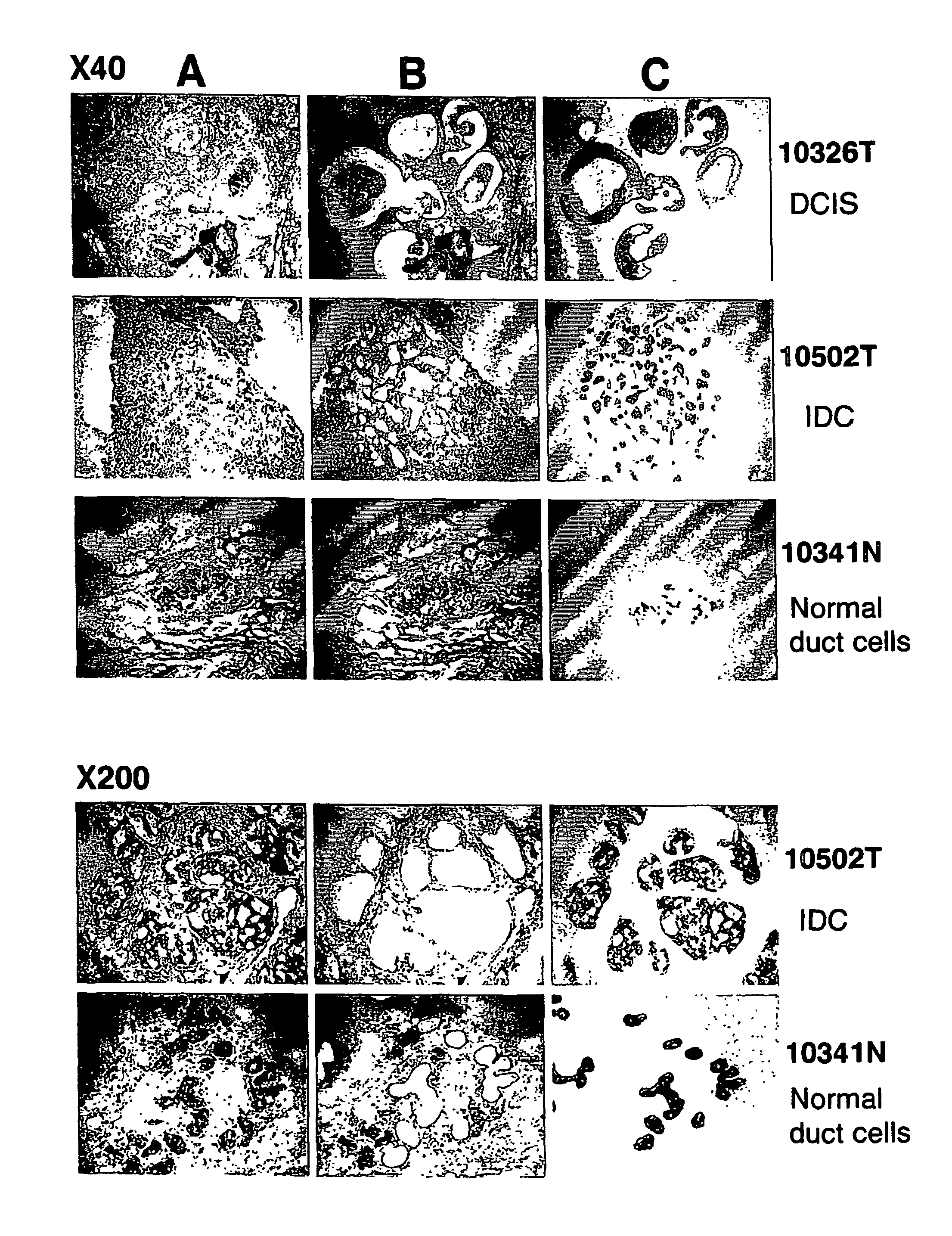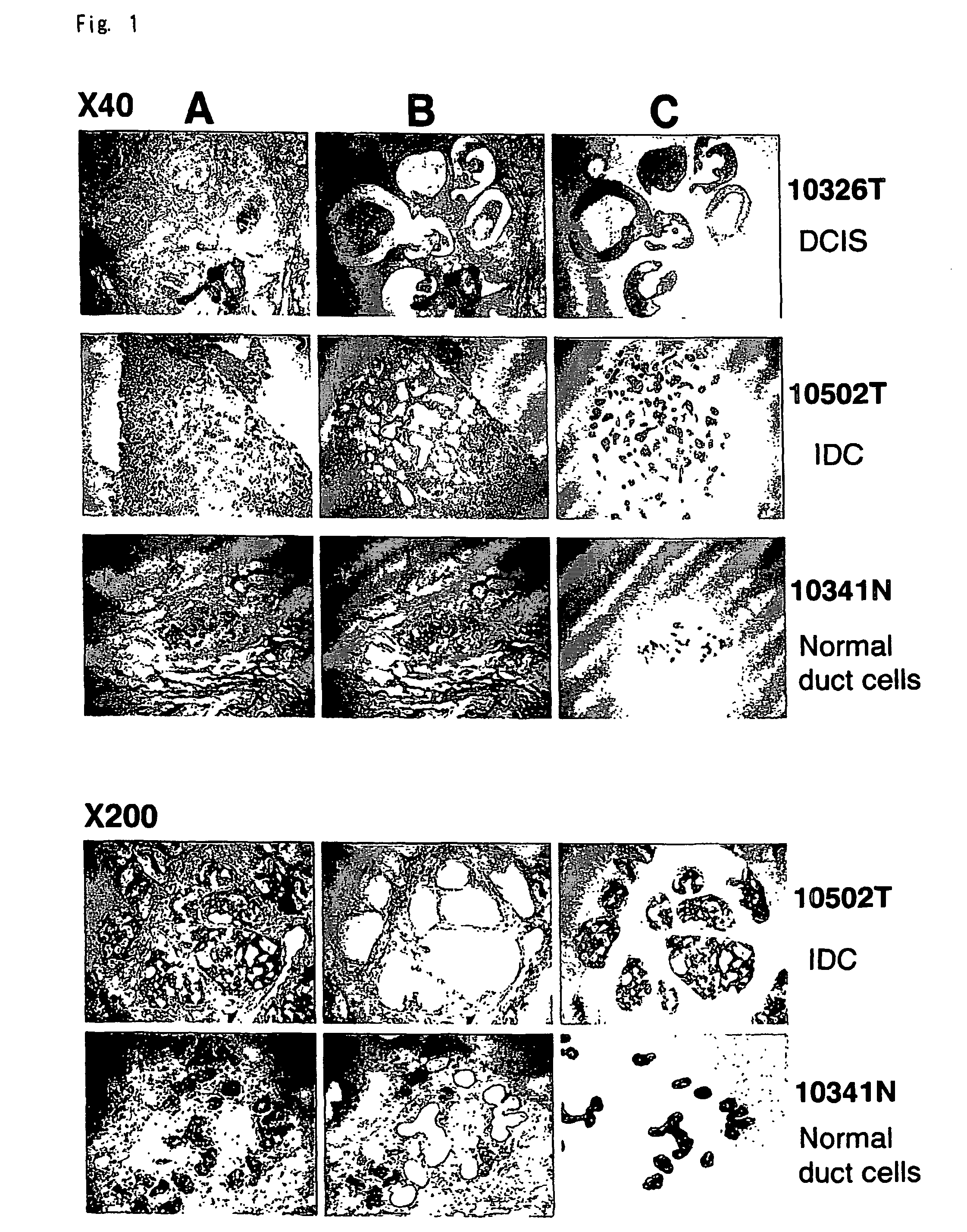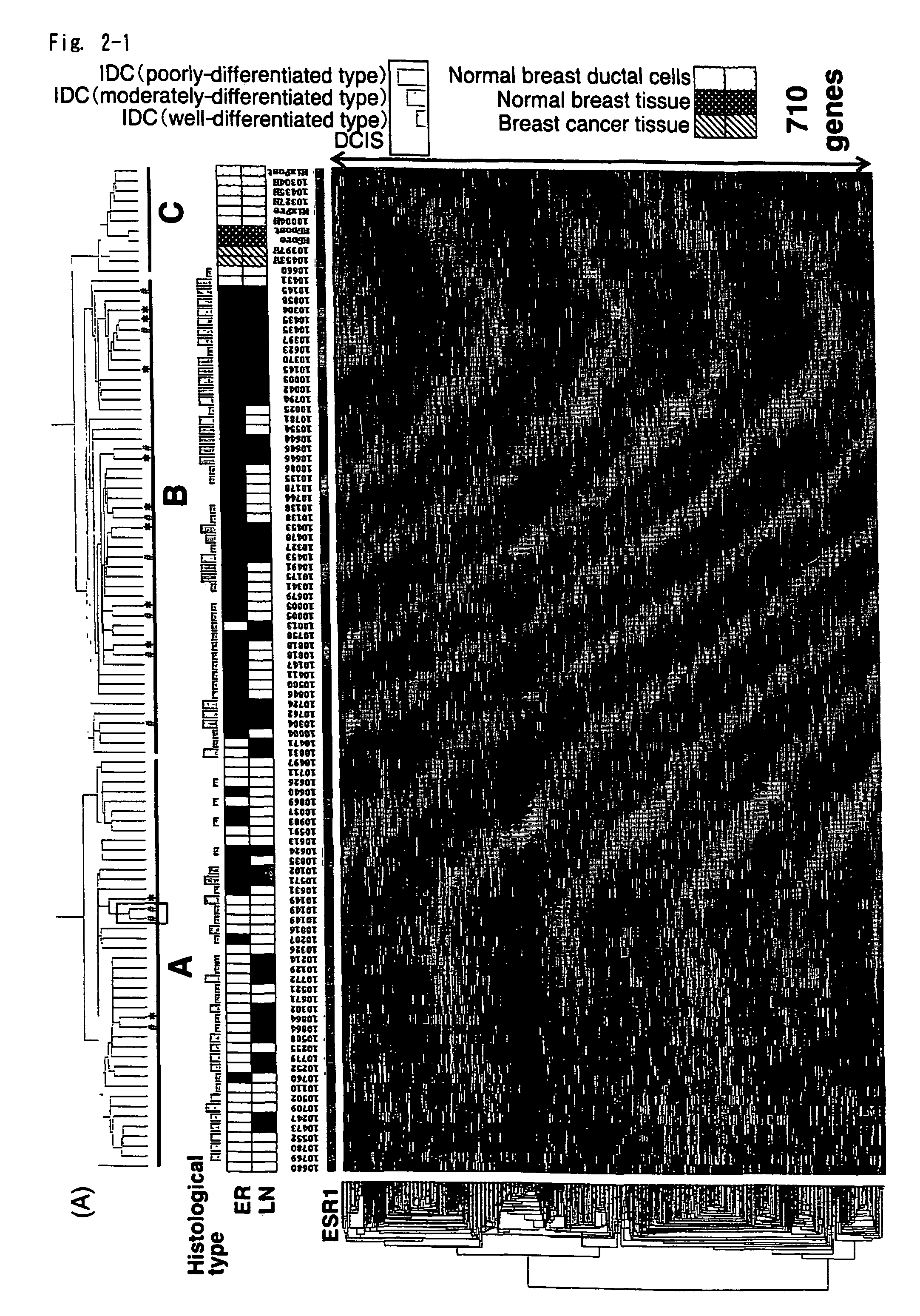Method of Diagnosing Breast Cancer
a breast cancer and breast cancer technology, applied in the direction of antibody medical ingredients, peptide sources, transferases, etc., can solve the problems of insufficient expressional changes of patient estrogen receptors, data derived primarily from tumor masses, and insensitivity of patients to estrogen receptors
- Summary
- Abstract
- Description
- Claims
- Application Information
AI Technical Summary
Benefits of technology
Problems solved by technology
Method used
Image
Examples
examples
[0189] Tissue obtained from diseased tissue (e.g., epithelial cells from BRC) and normal tissues was evaluated to identify genes which are differently expressed or a disease state, e.g., BRC. The assays were carried out as follows.
Patients and Tissue Samples:
[0190] Primary breast cancers were obtained with informed consent from 81 patients (12 ductal carcinoma in situ and 69 invasive ductal carcinoma from 2 cm to 5 cm (T2), median age 45 in a range of 21 to 68 years old) who treated at Department of Breast Surgery, Cancer Institute Hospital, Tokyo, Japan, concerning which all patients had given informed consent (Table 12). Clinical information was obtained from medical records and each tumor was diagnosed according to histopathological subtype and grade by pathologists. Tumor tissue was used to evaluate tumor type (according to the World Health Organization classification and the Japanese cancer society classification). Clinical stage was judged according to the JBCS TNM classifi...
PUM
 Login to View More
Login to View More Abstract
Description
Claims
Application Information
 Login to View More
Login to View More - R&D
- Intellectual Property
- Life Sciences
- Materials
- Tech Scout
- Unparalleled Data Quality
- Higher Quality Content
- 60% Fewer Hallucinations
Browse by: Latest US Patents, China's latest patents, Technical Efficacy Thesaurus, Application Domain, Technology Topic, Popular Technical Reports.
© 2025 PatSnap. All rights reserved.Legal|Privacy policy|Modern Slavery Act Transparency Statement|Sitemap|About US| Contact US: help@patsnap.com



